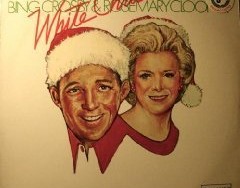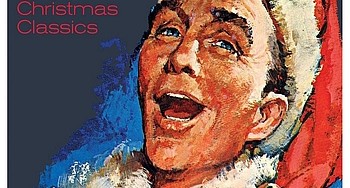Tag: Bing Crosby

Ultimate Christmas Cocktails – Various Artists
Half the fun of the holiday season is throwing (and/or attending) holiday parties! Here’s a great collection to serve as a soundtrack to your shindig. In fact, its usefulness as background music might be its best selling point. If you Read More …
“Snow” Fight!
. vs. In honor of December, and HPZ’s annual “White Christmas Pre-Christmas Countdown to Christmas,” I present a head-to-head match-up Read More …
The Cole Porter Story
. For years, a copy of The Cole Porter Story, as told to Richard G. Hubler, has been tucked away on the bookshelf of the headboard of my grandma’s guest bed upstairs. It appears to be stolen from a library, Read More …
They came a long way from St. Louis
Fans of the Heavy Petting Zoo know that I have a special place in my heart for Rosemary Clooney. My friends know this too (how could they not?), and upon a recent stop in Chicago, two good friends surprised me Read More …
Trouble’s just a bubble, and the clouds will soon roll by
It’s a vastly underrepresented musical era, yet – in my view – it is one of the most enjoyable: the music of the late 1920s and early 1930s. Perhaps part of the reason we don’t hear this music anywhere is Read More …

“White Christmas/A Christmas Special” – Bing Crosby and Rosemary Clooney
Fact: Christmas is not Christmas without Bing Crosby. I got this hard-to-find LP from a friend and former WSUMer who discovered it at a resale shop either here in Madison or down in Chicago. Side A features Bing Crosby, and Read More …

“Christmas Classics” – Bing Crosby
This CD was released in 2004, though it sounds like the recordings come to us from the 1950s. Bing’s baritone voice fills the room with rich, warm fuzzies and knocks you in the gut like the sack of sweet valencia Read More …